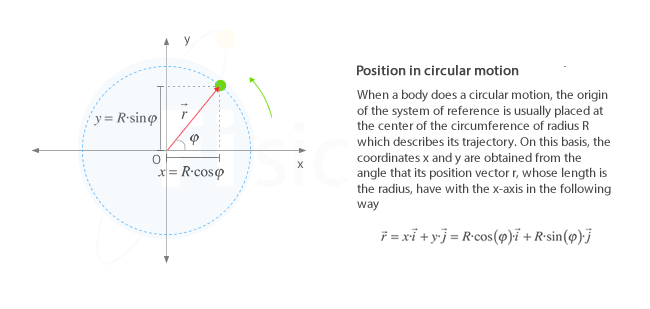A body performs a uniform circular motion (u.c.m.) when its trajectory is a circumference and its angular velocity is constant. In this section, we are going to study:
- The concept of u.c.m. through its main kinematic magnitudes
- The main characteristics of u.c.m.
Concept of U.C.M.
Nature and your daily life are full of examples of uniform circular motion (u.c.m.). Earth itself is one of them: it does a full rotation around its axis every 24 hours. Old record players or fans are other good examples of u.c.m.
Uniform circular motion (u.c.m.) is motion with a circular trajectory in which the angular velocity is constant. This implies that the body travels equal angles in equal times. In this motion, the magnitude of the velocity vector does not change but its direction (which is tangent to the trajectory at each point) changes. This means it neither has tangential nor angular acceleration, although it does have normal acceleration.
Placing the origin of coordinates at the center of the circumference, and knowing its radius R, we can express the position vector as follows:
This way, the position and the rest of the kinematic magnitudes will be defined by the value of the angle φ at each instant.

Characteristics of Uniform Circular Motion (U.C.M.)
Some of the main features of the uniform circular motion (u.c.m.) are the following:
- The angular velocity is constant (ω = cst)
- The velocity vector is tangent to the trajectory at each point and its direction is the same as the direction of the motion. This means that the motion has normal acceleration
- Both, the angular acceleration (α) and tangential acceleration (at) are zero, since the speed (the velocity vector magnitude) is constant
- There is a period (T), that is the time that the body takes in completing a full rotation. This means that the characteristics of the motion are the same every T seconds. The expression for the calculation of the period is
- There is a frequency (f), which is the number of complete rotations per second the body gives. Its value is the inverse of the period

